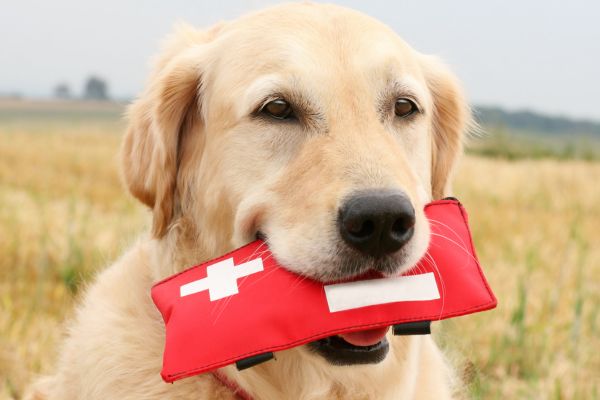Pet Adoption Tips
Caring for companion animals requires more than providing shelter, food, and water. To bring the right pet to your home requires careful planning and research. For Pet Adoption tips on how to prepare your home and yourself for a furry friend, read this article.
Are you ready to adopt?
Adopting an animal means that you have made a commitment to take care of it for the rest your life. This could be 10 to 15 years in dogs or up to 20 years in cats. Your animal will be a part of your daily life no matter what, even if you make lifestyle changes like moving, having children, or changing jobs. Will you be able to take care of your pet if your life circumstances change? Continue reading:
- The cost of owning a cat or dog is more than the initial adoption fee. Feed, veterinary care and proper identification can add up. This includes a collar with tags or a permanent form of ID like microchipping.
- Also, time is a factor. Dogs can benefit from a lot of exercise and companionship each day. Cats love to play and are most at their best when they’re indoors. This is not the time to adopt if your job requires you to travel frequently or if you are out of the home most days and nights.
- You should consider whether your children and your pets are able to handle the addition of a cat/dog to your household.
Which pet is right for you?
To determine the right pet for you, consider your personality, lifestyle, and challenges like space limitations and time spent away from home. Ask shelter staffers for help and research different breeds. They are experts in matching pets!
Are You Thinking of Adopting A Dog?
- Dogs are loyal and loving social animals that thrive on being loved by their families.
- A puppy is not the best choice if you have young children. A medium-sized dog that is at least five months old may be a good choice.
- It’s a smart idea to create a schedule that lists who will be responsible for caring for your dog. This includes walking, grooming, and playing.
- Make sure to spay or neuter your new friend. Socialization is key to a happy, confident dog. All puppies must be enrolled in a puppy program where they can play with other dogs.
- Adult dogs can benefit from basic manners classes to improve their skills and learn new ones.
- America’s shelters are full of pit bull-type dogs. These dogs can be great companions and loyal family pets, but there are many myths.
- Call your local animal shelter or city hall to learn about the breed laws in your area before you decide to adopt. Some areas may discriminate against certain breeds. You may not be allowed to live in certain areas, and it may be difficult to get homeowners insurance. This shouldn’t stop you from adopting a pitbull-type dog. Before you decide to adopt, make sure you are aware of your rights and limitations.
If you are thinking about adopting a cat:
Cats are graceful, athletic, playful and affectionate.
- Everyone in the home should be prepared to adopt a cat.
- Cats are often very independent. Everyone needs to know that the fun starts only when the cat feels secure and her needs are being met.
- Once everyone is ready to groom, feed, and change litter, you can divide up the chores so that everyone is ready to take care of kitty when she arrives.
- Like dogs, it is important that your feline friend be spayed/neutered.
Prepare Your Home for a Neutered Cat or Dog
You will need to ensure your home is safe before you adopt, whether it’s sealing all your garbage cans or looking out for dangerous decorations at holidays. This includes keeping dangerous household items, toxic foods, and plants that are not suitable for pets out of reach. These are some tips to help you prepare your home for a new feline or canine friend.
- In every room, make sure your pet has a comfortable bed. If they have appealing alternatives to furniture, pets are more likely to stay away from it.
- To discourage scratching from your cat, you can use double-sided sticky tape and upside-down carpet runners to cover furniture.
- Avoid pooling drapery, vertical blinds, and ornate tassels. Long cords can pose strangulation dangers.
- High-quality metal screens should be installed on windows if you have cats.
- You might consider rolling up and storing decorative rugs until your dog is house-trained.
- Give your cat a variety of scratching posts or perches.
- Dog crates or gates can be used to keep your dog in the house until he is able to master his house manners and become unsupervised.
- Give your dog plenty of chew toys. You can reduce the likelihood of your dog chewing on your toys and bones if he has his own toys and bones.
- Make sure your pets are safe from poisonous plants around your home.
Bring a new horse home
Horses are social animals and will form herds with others if they have the opportunity. This is why new horses can be easily integrated into existing horse groups.
When you bring a new horse into your stable or herd, it is important to consider their comfort. These guidelines will help you maximize your comfort and minimize problems when you bring home a new horse.
How to prepare for your new arrival
Take a look at your barn. Horses who are new to an area of the country will be more likely to sniff everything. Horses that are scared will be less likely to be wary of possible hazards. You are responsible for checking for hooks, loose nails and sharp edges.
Check walls and doors for any spaces that could catch a head or hoof. Check that your feed room doors are closed securely. Also, make sure that buckets are not too high so that a hoof can’t reach them. If necessary, put barriers in place so that barn mates cannot see you face to face.
Pay attention to the paddock. The paddock should be inspected. Verify for any loose or damaged fencing, such as old wire, branches, and trash. Make sure to check water sources for sharp edges. Make sure your horse is able to share water with other horses if he needs it.
Check your first aid kit. Keep medical supplies handy in case your horse is exposed to a danger you didn’t know about.
Prepare the area for your new occupant:
Before you take your horse into the stall, make sure that you have fresh hay and clean shavings. It will take your horse less time to get used to his new surroundings if he is aware of his water and food sources. You have the option of several stalls. Choose one that allows your horse to see other horses.
Prepare the paddock if you plan to keep your horse in a shelter-rich area. Before you allow your horse to enter the paddock, make sure that the water supply is full and there is plenty of fresh hay. You have the option of several paddocks. Choose the one that allows him to see the most horses, but does not allow him to touch another horse.
Place enrichment items in the area you will be housing your horse. Enrichment refers to creating an environment that is challenging for your horse. It can be used to stimulate his mind and social, psychological, and physical needs. This can reduce the chances of your horse exhibiting undesirable behaviors and help you to shape his behavior in a new environment. You can provide mental stimulation with a variety of feeding options such as treat-dispensing devices or apple or carrot pieces floating in his water. Or, you could use four to five smaller hay piles as an alternative. You can also give him a wall-mounted scratchbrush to use.
Introduce Your Horse to His New Home
These steps will help to reduce stress that your horse may feel when he arrives at his new home.
- Slowly walk your horse as soon as you get him off the trailer. Let him sniff around and observe what interests him. Give him at most 15 minutes to explore the area around the stall or the paddock shelter where he will be staying.
- After letting your horse explore his new area, you can take him into your stall or paddock. You can then walk him around the paddock, stopping for water, food, and enrichment.
- You can leave him alone in the paddock or stall and watch his behavior for at most one hour. You should observe his behavior for signs of settling in. He may be eating hay, shaking off water, or holding his ears in a relaxed place.
- After his first night, your horse should go on at least two walks around the property with you. This will allow him to get used to his surroundings and feel at home. Place treats strategically where other horses are likely to explore or get aroused. Let him discover the treats and make it a game of exploring the area.
Introduce Your Horse to the Herd
It doesn’t matter if you have one horse or a whole herd, it is important to take the time and introduce your horse to the rest of the group in a structured way. This process is often called “howdy”, and allows the horses to gradually introduce themselves to each other before they share the same space. The howdy process is a series stages that gradually increases the contact between horses. You can increase the contact between your horse and the other horses if you don’t notice any arousal at the current stage. The process may take 24 hours or more, but it could take up to a week before they can safely be in a paddock together.
These are the steps of the howdy procedure:
Visual contact. All introductions to horses should be made with visual contact. Horses are social creatures and will form herds naturally in the wild. Horses are prey animals and have greater safety in a group. Your new horse will be less afraid to look at other horses and will settle quicker. Visual contact should be initiated as soon as your horse is allowed to enter his new space.
Very little tactile access. Let the horses sniff each other and blow into each others’ nostrils (a social greeting behaviour). However, they should not be allowed to intertwine their necks or heads. This stage can be prevented by using fence panels or stall doors with guards. Be on the lookout for hoof strikes, biting attempts, squealing, and pinned ears. These behaviors should not be punished. Just observe. These behaviors should be observed and should decline as horses get closer to one another.
Greater tactile contact. When horses stop reacting you can increase their contact with one another. Start with the dominant member of the herd if you are introducing your horse to a large group. Avoid slapping horses with a slatted or tall barn door. Forward hoof strikes are common during horse introductions. One horse should be placed on one side and the other the other. You should give the horses the option to approach or avoid each other. They should only be able to reach their necks and heads into the partition. The horses will have become comfortable with each other by this point if the initial tactile process was done correctly. Horses might touch each other’s necks, noses, ears, or necks. Be aware of hoof strikes, biting attempts, squealing, pinched ears, and bite attempts. These behaviors should not be interfered with unless an injury is imminent. Horses should be less aggressive if they have easy access to one another.
If you have more than one horse, finish this stage with the dominant one before allowing the rest of your herd to access the new horse. .
Access to the paddock (full access). This last stage requires some preparation. Make sure to inspect the paddock. You can place several piles of hay in the paddock and then load the area with enrichment equipment so the horses have a variety of activities. Paddock boots, polo covers, or other protection for the legs should be worn by horses if possible. These items should not be worn by horses if they have never used them before. For increased tactile access, you can also start full-access introductions in a paddock next to the area that you have been using.
Related Articles:
https://www.animalfinds.co.uk/adopting-a-dog
https://www.animalgo.co.uk/pet-adoption-tips/
https://www.animalguides.co.uk/adopting-a-shelter-dog
https://www.animalchoice.us/adopt-a-shelter-dog
https://www.animalgrow.us/adopting-a-pet-animal
https://www.animalpro.us/dog-adoption-advice
https://www.animalintro.com/remember-before-you-get-a-dog
https://www.animalworth.com/pet-adoption-tips
https://www.animalrealtime.com/dog-adoption-tips
https://www.animalguide.us/pet-adoption-tips
https://www.animalforlife.co.uk/adopting-a-dog
https://www.happylifeanimal.com/adopting-a-dog
https://www.animalwelove.co.uk/welcoming-a-new-pet
https://www.friendlyanimal.us/first-time-adopting-a-dog


